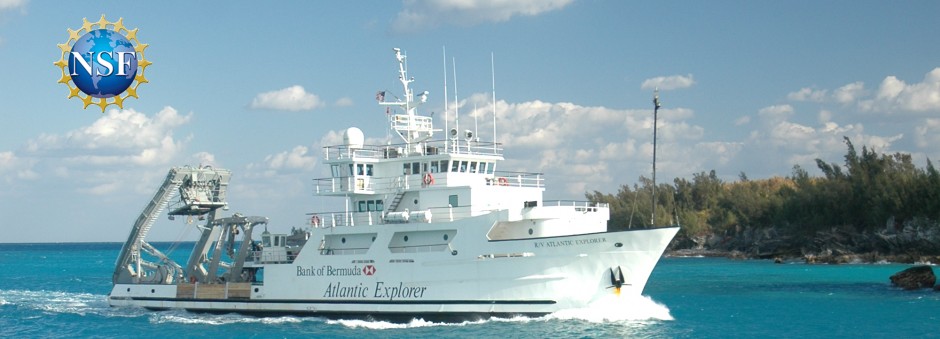Katherine Allen is a Postdoctoral Researcher from Rutgers University, and she is studying how the chemistry of plankton shells can teach us about climate change!
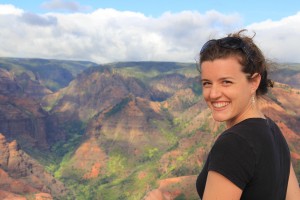 My ultimate goal is to understand the ocean’s role in climate change. On the cruise, I will collect both seawater and plankton — specifically, I’ll focus on single-celled organisms called foraminifera, which build tiny calcite shells. If I can determine how the ocean’s temperature and salinity affects the chemical composition of foraminiferal shells in today’s ocean, I can apply these relationships to ancient sediments containing fossil shells, and eventually figure out what past oceans were like. Were they warmer than today? Saltier? Both? How did these conditions vary between ice ages and warm periods? By collecting water and plankton samples across a wide range of conditions between Barbados and Bermuda, I aim to provide a new way to probe ocean history. (click HERE to see what foram shells look like)
My ultimate goal is to understand the ocean’s role in climate change. On the cruise, I will collect both seawater and plankton — specifically, I’ll focus on single-celled organisms called foraminifera, which build tiny calcite shells. If I can determine how the ocean’s temperature and salinity affects the chemical composition of foraminiferal shells in today’s ocean, I can apply these relationships to ancient sediments containing fossil shells, and eventually figure out what past oceans were like. Were they warmer than today? Saltier? Both? How did these conditions vary between ice ages and warm periods? By collecting water and plankton samples across a wide range of conditions between Barbados and Bermuda, I aim to provide a new way to probe ocean history. (click HERE to see what foram shells look like)
Jonathan Cohen is an Assistant Professor from the University of Delaware, and he studies how marine organisms see!
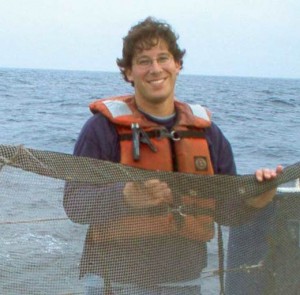 I study animal eyes, particularly how deep-sea animals use light and vision to do important things such as finding food, avoiding predators, and finding mates. On the cruise, I will be collecting copepods from 200 to 500 m depth and testing the sensitivity of their eyes aboard the ship using a technique that measures electrical signals. I also am co-chief scientist for this cruise, meaning that I will coordinate the day-to-day research plan for the cruise, and work with all the scientists and the ship’s captain and crew to achieve our research goals. (See a close up of a copepod HERE)
I study animal eyes, particularly how deep-sea animals use light and vision to do important things such as finding food, avoiding predators, and finding mates. On the cruise, I will be collecting copepods from 200 to 500 m depth and testing the sensitivity of their eyes aboard the ship using a technique that measures electrical signals. I also am co-chief scientist for this cruise, meaning that I will coordinate the day-to-day research plan for the cruise, and work with all the scientists and the ship’s captain and crew to achieve our research goals. (See a close up of a copepod HERE)
Paul Suprenand is a Postdoctoral Researcher from the University of South Florida. Paul studies how marine organisms throughout the food chain interact with each other and are affected by climate change!
 I combine the disciplines of Ecology, Physiology and Ecological Modelling for my research. I study zooplankton (such as this pteropod) and climate change in Antarctica, physiology of zooplankton in the Pacific and Atlantic Oceans, as well as marine predator-prey relationships in the Arctic, Antarctic and the Gulf of Mexico. I recently completed my first postdoctoral position at the University of South Florida’s College of Marine Science where I worked to identify methods for improving fishing regulations in the Gulf of Mexico, and, starting in July, I will begin a second postdoctoral position at the University of Florida where I will work with Florida’s clam fisheries. I am currently an International Arctic Science Committee Fellow, an avid nature photographer (see my photos at http://www.suprenand.com/), as well as the co-chief scientist for the 2014 Chief Scientist Training Cruise. Learn more about what zooplankton are and watch a cool video by clicking HERE.
I combine the disciplines of Ecology, Physiology and Ecological Modelling for my research. I study zooplankton (such as this pteropod) and climate change in Antarctica, physiology of zooplankton in the Pacific and Atlantic Oceans, as well as marine predator-prey relationships in the Arctic, Antarctic and the Gulf of Mexico. I recently completed my first postdoctoral position at the University of South Florida’s College of Marine Science where I worked to identify methods for improving fishing regulations in the Gulf of Mexico, and, starting in July, I will begin a second postdoctoral position at the University of Florida where I will work with Florida’s clam fisheries. I am currently an International Arctic Science Committee Fellow, an avid nature photographer (see my photos at http://www.suprenand.com/), as well as the co-chief scientist for the 2014 Chief Scientist Training Cruise. Learn more about what zooplankton are and watch a cool video by clicking HERE.
Karen Stamieszkin is a third year Ph.D. student at the University of Maine. She studies the role of zooplankton poop in Earth’s carbon cycle, and the structure of marine food webs! She categorizes marine life using organism size as a central trait.
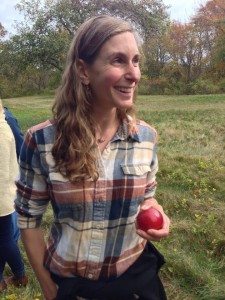 I like to study research questions about big patterns in the sea. For example, plankton of different sizes live in different places throughout the world’s oceans. These patterns are not random: they can be predictable. Size is an important trait of marine organisms. It determines what a critter can eat, what can eat it, and more! On this research cruise, I will be collecting zooplankton samples that I will analyze in a new way. Usually zooplankton are categorized by what species they are. Instead, I am going to categorize them by what size they are, and come up with a size-diversity index. A diversity index is a scale of numbers that tells you how similar or different things are from one another. By studying size diversity, I hope to learn about how ecosystems in different parts of the ocean work.
I like to study research questions about big patterns in the sea. For example, plankton of different sizes live in different places throughout the world’s oceans. These patterns are not random: they can be predictable. Size is an important trait of marine organisms. It determines what a critter can eat, what can eat it, and more! On this research cruise, I will be collecting zooplankton samples that I will analyze in a new way. Usually zooplankton are categorized by what species they are. Instead, I am going to categorize them by what size they are, and come up with a size-diversity index. A diversity index is a scale of numbers that tells you how similar or different things are from one another. By studying size diversity, I hope to learn about how ecosystems in different parts of the ocean work.
Sam Monk is a Research Technician for the Bermuda Atlantic Time-series Study (BATS). The BATS program has been studying the biology, chemistry, and physics of various areas of the Atlantic Ocean since 1988!
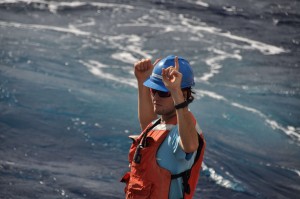 After studying oceanography at the National Oceanography Centre Southampton and University of Washington, Seattle, he joined the BATS team initially as an intern in 2011 before going full time in early 2012. Since joining BATS he has continued to enjoy the diverse nature of the work of an oceanographer. He spends his time divided between lab work, writing code, processing data and going to sea on the monthly BATS expeditions. The areas of research which interest him covers a range of oceanographic disciplines, but he leans towards physical oceanography. Currently he is working on a project investigating the changes seen in surface salinity over the course of the time series, investigating the links between these and variations in precipitation.
After studying oceanography at the National Oceanography Centre Southampton and University of Washington, Seattle, he joined the BATS team initially as an intern in 2011 before going full time in early 2012. Since joining BATS he has continued to enjoy the diverse nature of the work of an oceanographer. He spends his time divided between lab work, writing code, processing data and going to sea on the monthly BATS expeditions. The areas of research which interest him covers a range of oceanographic disciplines, but he leans towards physical oceanography. Currently he is working on a project investigating the changes seen in surface salinity over the course of the time series, investigating the links between these and variations in precipitation.
For more information on the BATS project see: http://www.bios.edu/research/projects/bats/. To access BATS data follow the links at the end of the page linked above.
Steve Tuorto is a Postdoctoral Researcher at Rutgers University. He studies how microbes cycle carbon and nutrients through earth’s ecosystems by studying bacteria and the organisms that feed on them!
 I study the number and names of bacteria that are in the ocean and in the earth. What do they “eat” and how much? Who eats the bacteria and how much of them are eaten by their predators? This is what I’ll be looking at on this research cruise. Almost all living things will eventually be broken down into tiny bits of carbon and be eaten by bacteria (if you add together all living things, that’s a lot of carbon!!). Knowing what happens to that carbon can help us understand many things, from how our climate works to how clams form their shells! I study the microbes by taking special measurements of their DNA and RNA (their genetic material), but also by directly observing how they interact. For example, the predators of bacteria are mostly protozoa such as amoeba or ciliates, and if I make the bacteria glow, I can watch them eat! Click HERE to see a picture of a ciliate that has eaten some bacteria! The ciliate is invisible, but you can see their food pouches (called vacuoles) filled with bacteria.
I study the number and names of bacteria that are in the ocean and in the earth. What do they “eat” and how much? Who eats the bacteria and how much of them are eaten by their predators? This is what I’ll be looking at on this research cruise. Almost all living things will eventually be broken down into tiny bits of carbon and be eaten by bacteria (if you add together all living things, that’s a lot of carbon!!). Knowing what happens to that carbon can help us understand many things, from how our climate works to how clams form their shells! I study the microbes by taking special measurements of their DNA and RNA (their genetic material), but also by directly observing how they interact. For example, the predators of bacteria are mostly protozoa such as amoeba or ciliates, and if I make the bacteria glow, I can watch them eat! Click HERE to see a picture of a ciliate that has eaten some bacteria! The ciliate is invisible, but you can see their food pouches (called vacuoles) filled with bacteria.
Barbara Cottrell is a Project Scientist at the University of California, Irvine. Barbara is an environmental chemist studying the dissolved organic matter (DOM) found in all natural waters!
 Rainwater, river, lake, and seawater contains thousands of organic compounds that regulate the chemistry of water. Fresh water DOM comes from decaying plant material while marine DOM is produced by phytoplankton and microbes (see a picture of the DOM cycle here). DOM absorbs sunlight to decompose pollutants, it regulates metal availability to microorganisms, and is involved in the global carbon cycle. The complexity and low amounts of DOM makes it difficult to study. I’ve developed specialized methods to isolate, separate, and identify different types of DOM. The cruise will provide access to large volumes of seawater for determining the variability in composition and photoreactivity of DOM metal-binding compounds.
Rainwater, river, lake, and seawater contains thousands of organic compounds that regulate the chemistry of water. Fresh water DOM comes from decaying plant material while marine DOM is produced by phytoplankton and microbes (see a picture of the DOM cycle here). DOM absorbs sunlight to decompose pollutants, it regulates metal availability to microorganisms, and is involved in the global carbon cycle. The complexity and low amounts of DOM makes it difficult to study. I’ve developed specialized methods to isolate, separate, and identify different types of DOM. The cruise will provide access to large volumes of seawater for determining the variability in composition and photoreactivity of DOM metal-binding compounds.
Check out these fun links to learn more about the earth’s water and carbon cycles, and how they impact things like our climate!
Justin Haag is a graduate student from Scripps Institution of Oceanography and he studies deep sea camouflage!
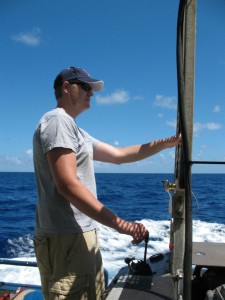 I use my knowledge of oceanography, physics, and engineering to develop optical instruments that can help us figure out how deep sea animals avoid predators by blending in with the background light. The first instrument I built was used to measure how mirrored fish (hatchetfish) and squid reflect light that falls on their skin. I now have a new instrument that can measure the amount of light in the deeper parts of the ocean (below 200 meters). At these depths, it is very dark compared to the surface, but other scientists have found that some predators still use eyes to locate prey. On this cruise, I will make measurements of deep sea light, and hope to improve our understanding of the everyday lives of the animals that call these underwater habitats home.
I use my knowledge of oceanography, physics, and engineering to develop optical instruments that can help us figure out how deep sea animals avoid predators by blending in with the background light. The first instrument I built was used to measure how mirrored fish (hatchetfish) and squid reflect light that falls on their skin. I now have a new instrument that can measure the amount of light in the deeper parts of the ocean (below 200 meters). At these depths, it is very dark compared to the surface, but other scientists have found that some predators still use eyes to locate prey. On this cruise, I will make measurements of deep sea light, and hope to improve our understanding of the everyday lives of the animals that call these underwater habitats home.
Steve Techtmann is a Postdoctoral Researcher at the University of Tennessee, Knoxville. He studies how microbes from the deep ocean have developed the ability to eat oil and other potential pollution!
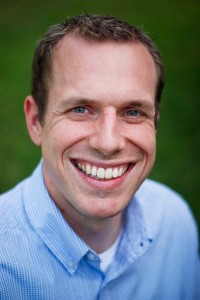 My ultimate goal is to understand how bacteria have evolved the ability to eat oil and other toxic chemicals. Despite the fact that many of the chemicals in oil are toxic to marine life, oil is a natural part of the ocean. Millions of gallons of oil are naturally released into the ocean each year from natural oil seeps. Many bacteria have developed the ability to eat this naturally released oil. A lot of work has recently been done to understand how these bacteria can be used to help clean up oil spills. I am looking at what types of oil eaters are living in different oceans around the world in order to get a big picture view of how microbes eat oil as well as what types of bacteria are able to eat oil. I look at the DNA and RNA from these oil eaters and try to grow them in the lab so that I can see how they work. By understanding oil-eating bacteria, we can better understand what happens to the oil that naturally enters the oceans, which will help us understand how certain organic chemicals cycle in the deep ocean. Additionally, this work will help us to be better prepared in the event of future oil spills
My ultimate goal is to understand how bacteria have evolved the ability to eat oil and other toxic chemicals. Despite the fact that many of the chemicals in oil are toxic to marine life, oil is a natural part of the ocean. Millions of gallons of oil are naturally released into the ocean each year from natural oil seeps. Many bacteria have developed the ability to eat this naturally released oil. A lot of work has recently been done to understand how these bacteria can be used to help clean up oil spills. I am looking at what types of oil eaters are living in different oceans around the world in order to get a big picture view of how microbes eat oil as well as what types of bacteria are able to eat oil. I look at the DNA and RNA from these oil eaters and try to grow them in the lab so that I can see how they work. By understanding oil-eating bacteria, we can better understand what happens to the oil that naturally enters the oceans, which will help us understand how certain organic chemicals cycle in the deep ocean. Additionally, this work will help us to be better prepared in the event of future oil spills
Christopher Hayes is a postdoctoral fellow at the Massachusetts Institute of Technology. He is studying the impact of aerosols on ocean chemistry!
 Aerosols are tiny drops of liquid or solid particles suspended in the atmosphere. They can come out of a can, but they also come from desert dust storms or sources of air pollution like coal burning. Both desert dust and air pollution supply the ocean with the nutrient iron, which is necessary to support the growth of phytoplankton, the base of the oceanic food chain. On this research cruise, I will trace the ocean impact of Saharan dust by measuring concentrations of thorium, an element not present in man-made aerosols. By also analyzing the Fe in aerosols and seawater, I hope to determine how important natural versus human inputs are for this nutrient and how these sources are likely to change in view of our changing climate. Read more about Chris’s research here.
Aerosols are tiny drops of liquid or solid particles suspended in the atmosphere. They can come out of a can, but they also come from desert dust storms or sources of air pollution like coal burning. Both desert dust and air pollution supply the ocean with the nutrient iron, which is necessary to support the growth of phytoplankton, the base of the oceanic food chain. On this research cruise, I will trace the ocean impact of Saharan dust by measuring concentrations of thorium, an element not present in man-made aerosols. By also analyzing the Fe in aerosols and seawater, I hope to determine how important natural versus human inputs are for this nutrient and how these sources are likely to change in view of our changing climate. Read more about Chris’s research here.
Maureen Conte is an oceanographer at the Bermuda Institute of Ocean Sciences (BIOS) and a cruise mentor. Her main role on the cruise is to provide training in skills needed to be an effective seagoing scientist and to assist the cruise participants!
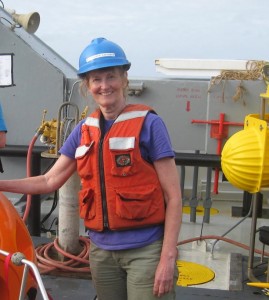 I am a biogeochemist and the Principal Investigator of the Oceanic Flux Program (OFP) time-series off Bermuda. The OFP has continuously measured the quantity and composition of particles sinking through the deep Sargasso Sea since 1978 and is the longest running program of its kind. The oceanic particle flux is very important to study as it regulates crucial ocean processes and the global cycling of many elements, and supplies the primary food materials for all life below the sunlit surface ocean. As particles sink through the water column, they are subjected to microbial degradation, animal consumption, physical dissaggregation/aggregation and desorption/adsorption reactions. Materials associated with easily degradable organic debris and dissolvable minerals are released into the surrounding waters. The depths of release affect the redistribution of nutrients by ocean circulation which, in turn, controls global patterns of ocean productivity. As sinking and suspended particles are scavenged and repackaged by animal grazers, particularly the nonselective gelatinous zooplankton that filter copious quantities of seawater each day, some particles are disaggregated while new sinking particles are formed. During the process non-target food items- such as suspended clay particles and pollutants transported by winds or currents from the continents- become incorporated into sinking particles and eventually are transferred to the seafloor. Although less than 1% of the particle flux typically survives the circuitous journey from the surface to the seafloor, the residual fraction that becomes buried in ocean sediments retains a wealth of information about past ocean conditions which can be used to reconstruct the earth’s history.
I am a biogeochemist and the Principal Investigator of the Oceanic Flux Program (OFP) time-series off Bermuda. The OFP has continuously measured the quantity and composition of particles sinking through the deep Sargasso Sea since 1978 and is the longest running program of its kind. The oceanic particle flux is very important to study as it regulates crucial ocean processes and the global cycling of many elements, and supplies the primary food materials for all life below the sunlit surface ocean. As particles sink through the water column, they are subjected to microbial degradation, animal consumption, physical dissaggregation/aggregation and desorption/adsorption reactions. Materials associated with easily degradable organic debris and dissolvable minerals are released into the surrounding waters. The depths of release affect the redistribution of nutrients by ocean circulation which, in turn, controls global patterns of ocean productivity. As sinking and suspended particles are scavenged and repackaged by animal grazers, particularly the nonselective gelatinous zooplankton that filter copious quantities of seawater each day, some particles are disaggregated while new sinking particles are formed. During the process non-target food items- such as suspended clay particles and pollutants transported by winds or currents from the continents- become incorporated into sinking particles and eventually are transferred to the seafloor. Although less than 1% of the particle flux typically survives the circuitous journey from the surface to the seafloor, the residual fraction that becomes buried in ocean sediments retains a wealth of information about past ocean conditions which can be used to reconstruct the earth’s history.
One of the first OFP discoveries was that the deep ocean is not remote, as then believed, but tightly connected with the surface via the rain of particles. Ensuing OFP research has shown that the entire water column is strongly affected by particle flux variability that can be linked to seasonal and short-term changes in the productivity of the overlying surface waters as well as to longer term changes in climate patterns. Although it is not yet clear how a changing ocean will affect the many processes that regulate particle flux generation and cycling within the ocean interior, what is clear is that any large scale perturbation in the particle flux will likely have global repercussions.
(Click these links to learn more about Maureen’s OFP work, or to read one her articles summarizing the importance of the OFP research!)
Jarrod Scott is a Postdoctoral Researcher at Bigelow Laboratory for Ocean Sciences. He studies the interaction of microbial communities with different environments such as mid-ocean ridges, seamounts, and even the intestines of other animals!
 My approach is to use the genetic identification of microbes, together with computer modeling and network theory to reveal groups that serve the same purpose and are adapted to specific habitats. During the 2014 UNOLS Chief Scientist Training Cruise I will be investigating the microbes from the intestines of a different groups of copepods. Due to their high abundance, rapid feeding rate, and short digestions times, copepods transport and recycle vast amounts of carbon, nutrients, and trace metals. Copepods also exhibit a wide range of feeding behaviors. They can be herbivores (eat phytoplankton), carnivores (eat other small animals), and can also be specialized parasites. However very little is known about beneficial associations between intestinal microorganisms and copepod hosts, and how these associations affect the copepod’s development, physiology, and metabolism. These interactions can also have substantial ecosystem level impacts, especially because copepods play a major role in community structuring (often termed foundation species) via nutrient cycling.
My approach is to use the genetic identification of microbes, together with computer modeling and network theory to reveal groups that serve the same purpose and are adapted to specific habitats. During the 2014 UNOLS Chief Scientist Training Cruise I will be investigating the microbes from the intestines of a different groups of copepods. Due to their high abundance, rapid feeding rate, and short digestions times, copepods transport and recycle vast amounts of carbon, nutrients, and trace metals. Copepods also exhibit a wide range of feeding behaviors. They can be herbivores (eat phytoplankton), carnivores (eat other small animals), and can also be specialized parasites. However very little is known about beneficial associations between intestinal microorganisms and copepod hosts, and how these associations affect the copepod’s development, physiology, and metabolism. These interactions can also have substantial ecosystem level impacts, especially because copepods play a major role in community structuring (often termed foundation species) via nutrient cycling.
Violetta Paba is a Research Technician for the Bermuda Atlantic Time-series Study (BATS). The BATS program has been collecting a wide range of biological, chemical and physical parameters at two key locations in the Sargasso Sea for over 25 years!
 On this cruise, I will be collecting a range of measurements to understand the water column structure along the Barbados – Bermuda transect. My research interests revolve around physical oceanography, and the implementation of new technologies to improve our sampling and understanding of the world’s oceans. I joined the BATS team in August 2012, right after having received my MSci Oceanography degree from the University of Southampton (UK). I have since been spending a good portion of the year at sea, collecting hydrographical and biochemical measurements of the water column at the BATS and Hydrostation ‘S’ time-series locations. My job on land focuses on processing the data we collect (in an instrument called a CTD) and editing before public release of data, which involves improving the computer programming we use to process the data.
On this cruise, I will be collecting a range of measurements to understand the water column structure along the Barbados – Bermuda transect. My research interests revolve around physical oceanography, and the implementation of new technologies to improve our sampling and understanding of the world’s oceans. I joined the BATS team in August 2012, right after having received my MSci Oceanography degree from the University of Southampton (UK). I have since been spending a good portion of the year at sea, collecting hydrographical and biochemical measurements of the water column at the BATS and Hydrostation ‘S’ time-series locations. My job on land focuses on processing the data we collect (in an instrument called a CTD) and editing before public release of data, which involves improving the computer programming we use to process the data.
Karen Wishner is a Professor of Oceanography at the University of Rhode Island’s Graduate School of Oceanography. Her role on the cruise is to be a co-mentor, along with Maureen Conte, providing training and assistance!
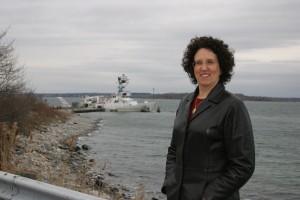 I am a biological oceanographer specializing in marine zooplankton ecology and the interactions of zooplankton with environmental features. I have spent about 24 months at sea over several decades, working on projects off California and New England and in the Eastern Tropical Pacific and Caribbean. I often use large opening/closing towed nets to collect zooplankton and have also done projects using submersibles and ROVs. My recent work concerns zooplankton adaptations to the large low oxygen region (oxygen minimum zone or OMZ) at mid-depths in the Eastern Tropical Pacific. Zooplankton biomass in the center of OMZs is sparse, and much of the zooplankton is concentrated in layers of high abundance at the upper and lower boundaries (oxyclines) of the OMZ. OMZs are predicted to expand in thickness and extent in the future as a result of global climate change, and this will probably alter the depth and intensity of the zooplankton biomass layers. This re-distribution of biomass may affect the fish populations that feed on zooplankton (such as tuna or marlin) and also potentially impact the amount of carbon transported to the deep sea from the surface ocean.
I am a biological oceanographer specializing in marine zooplankton ecology and the interactions of zooplankton with environmental features. I have spent about 24 months at sea over several decades, working on projects off California and New England and in the Eastern Tropical Pacific and Caribbean. I often use large opening/closing towed nets to collect zooplankton and have also done projects using submersibles and ROVs. My recent work concerns zooplankton adaptations to the large low oxygen region (oxygen minimum zone or OMZ) at mid-depths in the Eastern Tropical Pacific. Zooplankton biomass in the center of OMZs is sparse, and much of the zooplankton is concentrated in layers of high abundance at the upper and lower boundaries (oxyclines) of the OMZ. OMZs are predicted to expand in thickness and extent in the future as a result of global climate change, and this will probably alter the depth and intensity of the zooplankton biomass layers. This re-distribution of biomass may affect the fish populations that feed on zooplankton (such as tuna or marlin) and also potentially impact the amount of carbon transported to the deep sea from the surface ocean.
Adelaide Rhodes is a Postdoctoral Researcher at Texas A&M University, Corpus Christie. She studies bioluminescence in copepods!
 Have you ever looked out at waves crashing on the beach at night and seen a shimmering glow as the water hits the sand? This is bioluminescence, and it is generated the myriad of marine organisms that live in the ocean. The bioluminescence has many purposes: a signal of food in the water, a way to attract mates, and way to avoid predation. I am studying the genetic mechanisms of bioluminescence in marine copepods – a microscopic marine crustacean found in oceans worldwide.
Have you ever looked out at waves crashing on the beach at night and seen a shimmering glow as the water hits the sand? This is bioluminescence, and it is generated the myriad of marine organisms that live in the ocean. The bioluminescence has many purposes: a signal of food in the water, a way to attract mates, and way to avoid predation. I am studying the genetic mechanisms of bioluminescence in marine copepods – a microscopic marine crustacean found in oceans worldwide.
I became interested in copepod bioluminescence through collaboration with colleagues who were already studying genetic mechanisms in deep sea marine shrimp and amphipods. I have a few other projects that involve examining the genes that copepods use to deal with extreme environments, such as lipid desaturase genes involved in omega-3 fatty acid production and oxidative reductase genes involved in producing a natural defense against high UV conditions. These are just a few of the unique genes of copepods that allow them to live at the heights of the Himalayas, underneath the ice in Antarctica, along the sides of thermal hot springs, and in highly alkaline soapy lakes. Understanding the genetic machinery that allows copepods to survive can provide important information on how marine life has evolved over millions of years, and how it will persist in the face of future climate change events.
Lauren Seyler is a graduate student at Rutgers University. She studies marine archaea!
 My research involves a group of microorganisms that were discovered in the ocean just twenty years ago: the mesophilic (“moderate-loving”) archaea. Archaea are single-celled organisms that may belong to the most ancient evolutionary lineage on earth. It was once believed that archaea could only be found in extreme environments: very high temperatures such as hydrothermal vents, very salty places like the Dead Sea, and the guts of ruminant animals such as cows. However, we now know that archaea can be found in a variety of environments, from the deep ocean to the soil in your own backyard. I’m interested in studying how the archaea make a living in the sea, and how they interact with other single-celled organisms. What do they like to eat? How fast do they grow? What roles do they play in the environment? Like bacteria, archaea are too small to see with the naked eye- and even under a microscope it’s difficult to tell who is who. We can learn a lot about archaea by sampling them from the ocean and sequencing their DNA. One thing we know for sure is, they are almost everywhere, and there are lots of them!
My research involves a group of microorganisms that were discovered in the ocean just twenty years ago: the mesophilic (“moderate-loving”) archaea. Archaea are single-celled organisms that may belong to the most ancient evolutionary lineage on earth. It was once believed that archaea could only be found in extreme environments: very high temperatures such as hydrothermal vents, very salty places like the Dead Sea, and the guts of ruminant animals such as cows. However, we now know that archaea can be found in a variety of environments, from the deep ocean to the soil in your own backyard. I’m interested in studying how the archaea make a living in the sea, and how they interact with other single-celled organisms. What do they like to eat? How fast do they grow? What roles do they play in the environment? Like bacteria, archaea are too small to see with the naked eye- and even under a microscope it’s difficult to tell who is who. We can learn a lot about archaea by sampling them from the ocean and sequencing their DNA. One thing we know for sure is, they are almost everywhere, and there are lots of them!
Molly Redmond is an assistant professor at the University of North Carolina Charlotte. She studies bacteria that eat oil and natural gas.
I sample DNA and use isotope labeling experiments to determine which bacteria are active in consuming specific hydrocarbon compounds. I also try to culture hydrocarbon degrading bacteria. I’ve previously worked in the Gulf of Mexico during the Deepwater Horizon oil spill and at natural hydrocarbon seeps offshore Santa Barbara, California. Samples from this cruise will be an interesting comparison, as there is much less oil or natural gas than during an oil spill or at a natural seep site.
